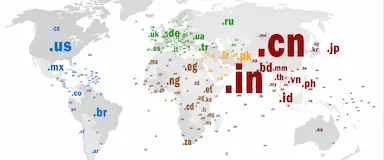With generic TLDs being oversaturated and marketed globally, country domains can help you reach a local audience and boost SEO.
Amazon Rolls Out Two New TLDs
Written by Sarah Johnson ·

The vast array of top-level domains (TLDs) continues to expand, with intriguing new additions released each year. Two new TLDs have just joined the party, thanks to tech giant Amazon. Let’s take a look at what these two TLDs are, how they might be used, and what the future could have in store for them.
Amazon’s Two Fresh TLD Releases
The two new TLDs launched by Amazon are .deal and .now. Both of these domain names were actually delegated by the Internet Corporation for Assigned Names and Numbers (ICANN) back in 2016, so it’s taken quite a while for them to finally launch.
But they’re finally here, ready for registration. Trademark holders have priority during the initial registration phase, but anyone will soon be able to buy and register their own .deal or .now domain names, without any specific restrictions for either one.
Let’s have a closer look at the pair of them.
The .deal Extension
We’ll start with a look at .deal. Those who follow the TLD industry closely may instantly think of the .deals extension when they see this one. The extension .deals has actually been around quite a while, pre-dating .deal by several years, as it launched in 2014.
They only differ by a single letter, so we can expect .deal and .deals to be used in similar ways. Specifically, ecommerce businesses and sites that specialize in online deals, discounts, and promos could make use of this extension.
A simple example could be a site like hot.deal, which could list a range of time-limited special offers from big brand stores. Sites might also use .deal as a subdomain to highlight sales events or special offers for their customers to take advantage of.
The Future and Potential of .deal
To get an idea of how well .deal might be received, we can look at its closest competitor: .deals. According to reports, .deals has had over 8,000 registrations since its 2014 launch. That’s not a huge number, but it shows that there is at least some interest in niche TLDs like this one.
However, it’s that same niche nature that effectively limits the potential of .deal. With four characters, it’s longer than a lot of other TLDs, making it a little harder to type and remember. It’s also got very specific use cases and won’t be of too much interest to the majority of organizations.
The .now Extension
Next, let’s consider the .now extension. This TLD brings to mind the idea of the here and now, living in the present, and what’s happening at the moment. It has a lot of strong associations with concepts of relevance and immediacy.
As such, we might expect the .now extension to find favor among brands or businesses that are all about capturing or making the most of the present moment. This opens a lot of possible opportunities, potentially giving .now a brighter future than .deal.
The Future and Potential of .now
There are several reasons to be optimistic about the future for .now. It’s a unique and fresh sort of TLD, and in today’s hectic, fast-moving world, with changing trends and fast-moving technology, the idea of a site that seems focused on the here and now could be quite appealing to the average user.
We could imagine, for example, national or local news networks adopting the .now extension to demonstrate their focus on current, ongoing events. Brands that have “Now” in their name might also be drawn to this TLD.
How .deal and .now Tie Into the Expanding World of Generic TLDs
The extensions .deal and .now are just a couple of examples of the many new generic TLDs hitting the scene on a regular basis. The likes of .food, .music, .bet, .meme, and .food have all also been added to the gTLD catalog in recent times, opening up lots of new avenues for site creation and innovation.
Could this all lead to the dethroning of .com? It’s highly unlikely. But, for many site owners, having more options certainly isn’t a bad thing, and it’ll be intriguing to see if the .deal and .now domains catch on and some of the surprising ways in which they could be used in the months to come.



